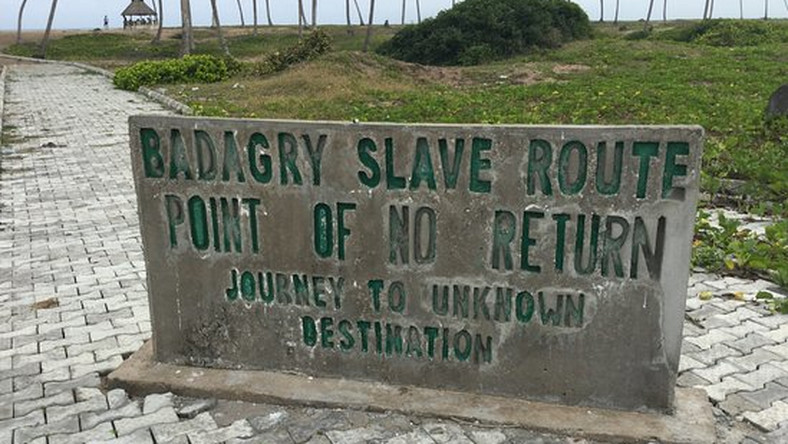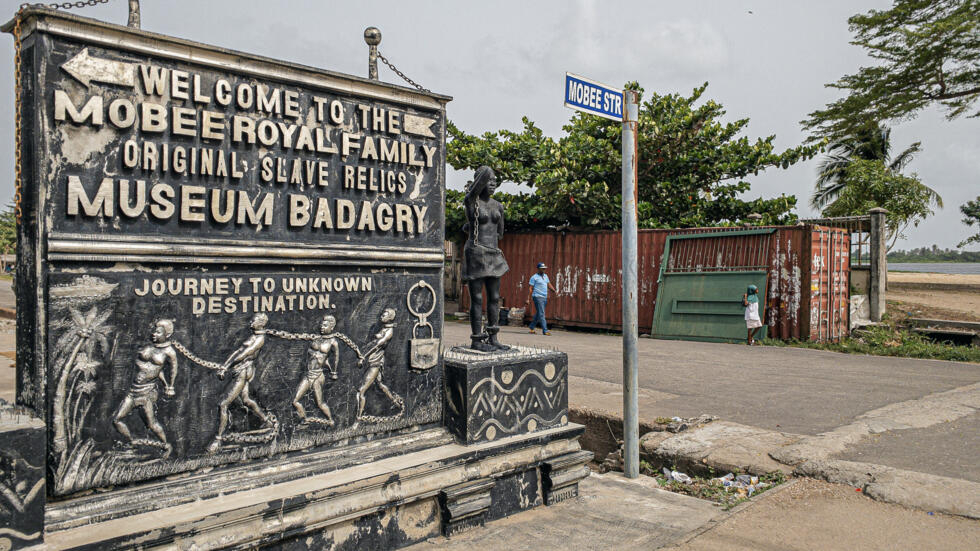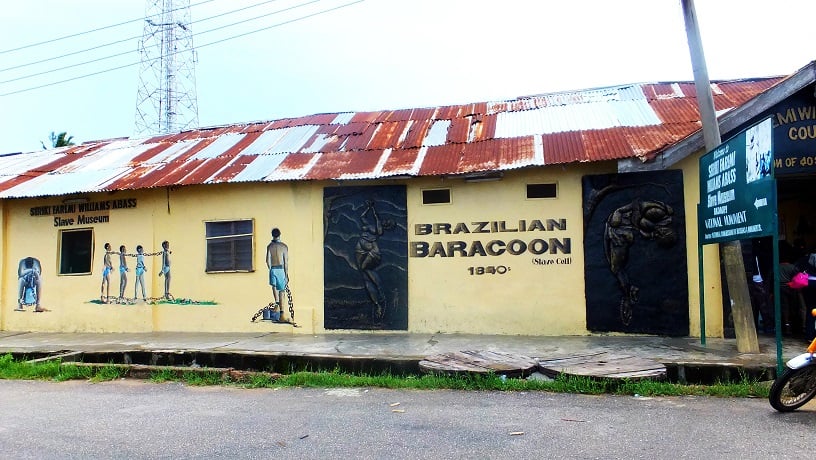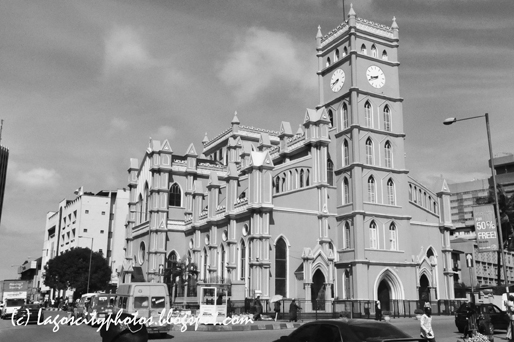Historical Places located in Lagos Nigeria
Tafawa Balewa Square (TBS)
Tafawa Balewa Square (TBS) is a historic public space located on Lagos Island, Lagos State, Nigeria. It is named after Nigeria’s first Prime Minister, Sir Abubakar Tafawa Balewa, and is commonly referred to as TBS. Here’s an overview of Tafawa Balewa Square:
History:
Tafawa Balewa Square holds historical significance as it was the venue for Nigeria’s independence ceremony on October 1, 1960, marking the country’s liberation from British colonial rule. The square was named after Sir Abubakar Tafawa Balewa in honor of his role in Nigeria’s early post-independence era.
Location:
TBS is situated in the heart of Lagos Island, adjacent to the Lagos Marina. Its central location makes it a prominent landmark in the city.
Architectural Features:
The square features an open space surrounded by a gallery of columns, creating an impressive architectural design. It has been used for various public events, ceremonies, and gatherings over the years. The architecture reflects a blend of modern design and historical significance.
Event Venue:
Tafawa Balewa Square continues to serve as a venue for a variety of events, including cultural festivals, political rallies, concerts, and national celebrations. Its large expanse can accommodate a significant number of people, making it a popular choice for public gatherings.
Monument:
In the center of the square, there is a monument commemorating Nigeria’s independence. The monument stands as a symbol of the country’s history and freedom.
Recreational Space:
Apart from hosting formal events, TBS is also utilized as a recreational space. People often visit the square for leisure activities, picnics, and to enjoy the open surroundings.
Infrastructure Hub:
The area around Tafawa Balewa Square is a hub for various government and commercial buildings, contributing to its importance in the city’s infrastructure.
Tourist Attraction:
Due to its historical significance and architectural appeal, Tafawa Balewa Square is considered a tourist attraction in Lagos. Visitors come to explore the site, learn about its role in Nigeria’s history, and witness any ongoing events.
Maintenance and Remodeling:
The square has undergone maintenance and remodeling over the years to preserve its architectural integrity and ensure its continued use as a public space. Such efforts aim to maintain the square’s importance and appeal.
Badagry
Badagry, a coastal town in Lagos State, Nigeria, has historical significance as it was a major hub for the transatlantic slave trade during the colonial era. There are several landmarks in Badagry associated with this dark period in history, including the Slave Port. Here’s an overview:
1. Point of No Return:

- Location: The Point of No Return is a symbolic place on the coast of Badagry where enslaved Africans were said to have taken their last steps on African soil before being loaded onto ships bound for the Americas.
- Significance: This location holds deep historical and emotional significance as it represents the final departure point for countless men, women, and children who were forcibly taken as slaves.
2. Slave Port:

- Location: The Slave Port is another historical site in Badagry associated with the slave trade. It is also known as the “Gberefu Island” or “Gberefu Peninsula.”
- Role: The Slave Port served as a point where captured Africans were held before being shipped across the Atlantic. It was a crucial part of the transatlantic slave trade route.
3. Badagry Heritage Museum:

- Location: The Badagry Heritage Museum is another significant site in Badagry that provides insights into the history of the slave trade.
- Exhibits: The museum displays artifacts, documents, and exhibits related to the transatlantic slave trade, shedding light on the experiences of those who were enslaved.
4. Brazilian Baracoon:

- Location: Badagry has Brazilian Baracoons (slave quarters) that were used to confine slaves before their transportation.
- Historical Structure: These structures were initially built by returnee Afro-Brazilian slaves who resettled in Badagry in the 19th century.
5. Mobee Family Slave Relics Museum:
- Location: The Mobee Family Slave Relics Museum is a private museum in Badagry that houses artifacts and relics related to the slave trade.
- Collections: The museum contains items such as chains, shackles, and documents that provide a tangible connection to the history of the slave trade in the region.
Visiting these sites offers a somber but important opportunity to reflect on the impact of the transatlantic slave trade on the lives of millions of Africans. It’s a reminder of the resilience and strength of those who endured unimaginable hardships during this dark period in history.
National Museum Lagos
Location:
The National Museum in Lagos is located in Onikan, a district on Lagos Island, Nigeria. It is situated in close proximity to other notable landmarks such as Tafawa Balewa Square and the Nigerian National Archives.
Collections:
The museum’s collections span a wide range of artifacts, artworks, and cultural items that represent Nigeria’s diverse ethnic groups and historical periods. Some of the key features include:
- Archaeological Artifacts: The museum houses artifacts from archaeological excavations, providing insights into Nigeria’s ancient history.
- Ethnographic Exhibits: Exhibits showcasing the traditional arts, crafts, and everyday objects of various Nigerian ethnic groups are on display.
- Art and Sculptures: The museum features a collection of traditional Nigerian art, including sculptures, masks, and other forms of artistic expression.
- Textiles and Traditional Attire: Visitors can explore the rich textile traditions of Nigeria, including traditional clothing and fabrics.
- Historical Documents: The museum may house historical documents and manuscripts that contribute to the understanding of Nigeria’s past.

Cultural Education:
The National Museum in Lagos serves as an educational institution, providing a platform for learning about Nigeria’s cultural diversity, history, and heritage. It plays a crucial role in preserving and promoting the country’s cultural identity.
Temporary Exhibitions and Events:
The museum may host temporary exhibitions and events, showcasing contemporary art, cultural performances, and thematic displays to engage visitors and highlight specific aspects of Nigeria’s cultural landscape.
Facilities:
The National Museum typically provides facilities for guided tours, educational programs, and research. It may have a gift shop where visitors can purchase souvenirs related to Nigerian art and culture.
Old Lagos Prison
The Old Lagos Prison, also known as Broad Street Prison, is a historic prison located in Lagos, Nigeria. It played a significant role during the colonial period and is an important historical site. Here’s an overview:
Location:
The Old Lagos Prison is situated in the central business district of Lagos Island, on Broad Street.
History:
The prison has a long history dating back to the colonial era when Nigeria was under British rule. It served as a place of confinement for individuals who were accused of various offenses during that time.

Architectural Significance:
The Old Lagos Prison is known for its distinctive architecture, reflecting the style prevalent during the colonial period. The building’s design is a reminder of Nigeria’s historical past and the impact of colonial rule on the country’s institutions.
Role During Colonial Era:
During the colonial period, the Old Lagos Prison was used to detain individuals who were convicted of crimes or awaiting trial. The conditions in colonial-era prisons were often harsh, and the prison system reflected the legal and penal practices of that time.
Closure and Preservation:
As Nigeria gained independence in 1960, the prison’s role changed over the years. It eventually closed, and efforts have been made to preserve the historic site as part of Nigeria’s cultural heritage.
Current Status:
While the Old Lagos Prison is no longer in active use as a correctional facility, the building may have been repurposed or preserved for historical and cultural significance. It might be open to the public or serve as a historical site for educational purposes.
Heritage and Tourism:
Historic sites like the Old Lagos Prison contribute to the cultural heritage of a region. Such sites attract tourists and history enthusiasts interested in learning about the colonial history and the evolution of Nigeria’s justice system.
The Cathedral Church of Christ Marina, Lagos
The Cathedral Church of Christ Marina, Lagos, holds significant historical and cultural importance. Here’s a summary of its key features and history:
Name and Location:
- The cathedral is officially known as the Cathedral Church of Christ Marina and is located on Lagos Island, Lagos, Nigeria.
Historical Timeline:
- Foundation Stone (1867):
- The foundation stone for the first cathedral building was laid on 29 March 1867.
- Establishment (1869):
- The cathedral was established in 1869.
- Current Building Construction (1924-1946):
- Construction of the current cathedral building, designed by architect Bagan Benjamin, began on 1 November 1924.
- The foundation stone for this building was laid by the Prince of Wales (later King Edward VIII) on 21 April 1925.
- The construction was completed in 1946.

- Relics of Rev Dr Samuel Ajayi Crowther (1976):
- In 1976, the relics of Rev Dr Samuel Ajayi Crowther, the first African bishop in the Anglican Church, were translated to the cathedral.
- A cenotaph was erected in his memory.
Ecclesiastical Roles:
- The cathedral has played various ecclesiastical roles in its history, including being the seat of the archbishop of the Province of West Africa, the seat of the archbishop and primate of All Nigeria, and the seat of the archbishop of the Ecclesiastical Province of Lagos.
- Currently, it serves as the seat of the Bishop of Lagos.
Organ:
- The cathedral houses an organ built by Oberlinger Orgelbau, Germany, situated on the right side of the altar.
- The organ has two façades—one facing the altar and the other facing the right nave.
- The instrument was renewed and the console rebuilt by the English company Harrison & Harrison at the beginning of the 21st century.
- It consists of 64 stops on 4 manuals and a pedalboard, making it the largest organ in Nigeria.

Presidential Wedding (1969):
- In 1969, the then-president of Nigeria, Yakubu Gowon, married Miss Victoria Zakari in a ceremony officiated by Seth Irunsewe Kale at the Cathedral.
The Cathedral Church of Christ Marina stands as a historic and architectural landmark, reflecting the Anglican Church’s presence and influence in Nigeria. Its rich history, architectural significance, and ecclesiastical roles contribute to its importance in the cultural and religious landscape of Lagos.

